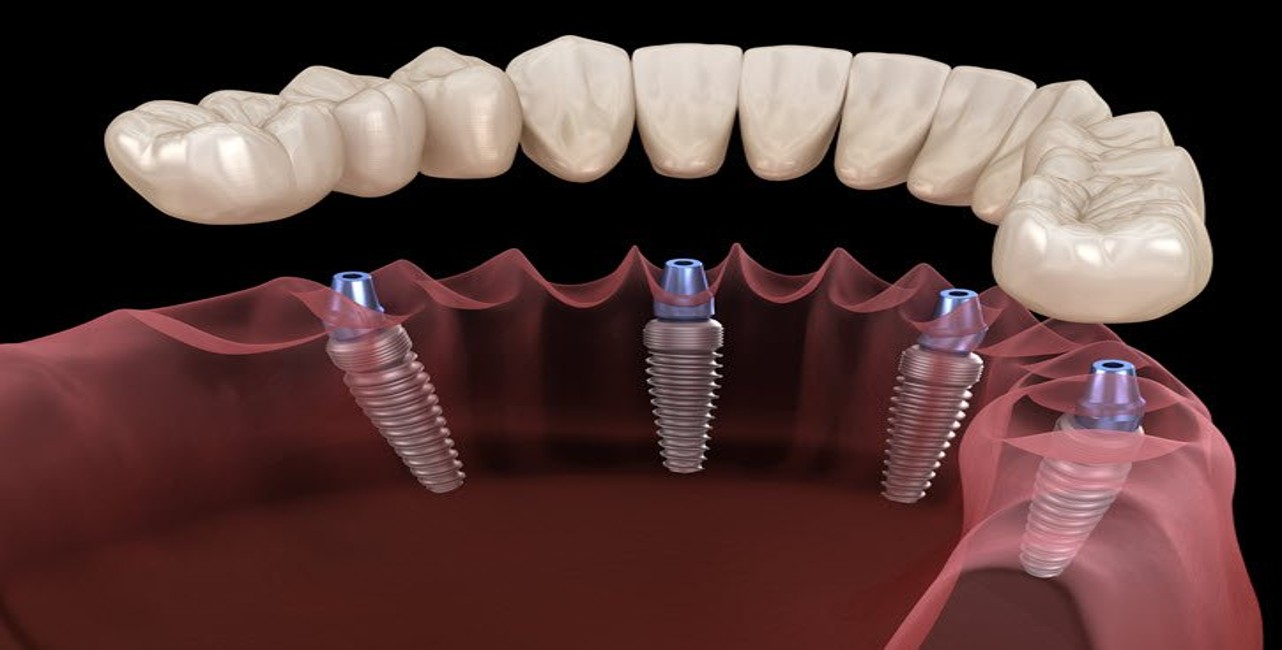Dental Implant
Our Services
Orthodontics
Laser Dentistry
Teeth Whitening
Teeth Cleaning
Cosmetic Dentistry
Root Canal Treatment
Dentures Treatment
Smile Makeover
Invisalign
Root Canal Therapy
Timings
Mon-Sat : 09:30 AM – 08:30 PM
Sun : 09:30 AM – 01:30 PM

What is a dental implant?
A dental implant is simply the most popular and ideal solution for replacing your missing or broken tooth with an artificial tooth. According to your dental condition and requirements, our will help you restore your cracked or lost tooth with dental implantation. Implants look and work the same as your natural teeth.
Who is suitable for a dental implant?
Before undergoing dental implantation, ensure that you are the right candidate for dental implants.
Patients getting dental implants must be in good health, have adequate bones to hold the implants, and commit to proper oral hygiene.
The following factors determine your eligibility for the dental implantation:
What are the benefits of dental implants?
- Dental implants help replace the missing tooth permanently and give your teeth a natural look.
- Dental implants enhance the face’s shape and contour, which can go wrong due to missing teeth making the facial tissues droop.
- Implants don’t harm the surrounding teeth and protect the healthy bone.
- Implants ensure excellent appearance and ease with no speech problem.
- Implants boost your confidence for being an ideal solution to your lost tooth.
- Implants provide the liberty to enjoy your favorite foods without any teeth sensation.
How is dental implantation done?
- Our Implantologist will work closely with you to develop a personalized treatment plan to restore your smile and dental health.
- Our dentist will first examine your jaw, mouth, and teeth to check if you are the right candidate for an implant.
- The X-ray provides our dentist with an idea of your oral health and indicates whether your dental implant will be successful.
Below are the steps of the dental implantation:
1. Incision
Under anaesthesia, our dentist will make a deep incision on your gum, just above the jawbone. Then withdraw this split tissue to see the bone. The incision position is crucial to allow suitable gum tissue to cover the implant.
2. Initial drilling
Our dentist will make a pilot hole and start the drilling again but at a lower speed drill. The process of drilling ends after achieving the expected drilling size for the implant. Here, the temperature is kept under control to avoid any damage to the nerve and cells.
3. Placing Implant
Our dentist will screw the dental implant in the cavity with a pressure-sensitive wrench that is made to avoid the extensive tightening of a screw or creating stress on the adjacent bone and tissues.
4. Closing the cavity
After screwing the dental implant in the bone, the soft tissue is drawn back in a way that enables the implant tip to expose or cover by the tissue. Covering the implant entirely or allowing it to emerge from the surface is based on the prosthesis type preferred for installation
Though the dental implant is not a major surgery but giving enough time for the implant is necessary that decides its success. However, bone growth is low but essential for the success of preventing the mobility of the implant.
Our dentist, with their highly devoted team, will provide complete success in this procedure. Therefore, they make every possible effort to ensure that you get positive results with the dental implant.
